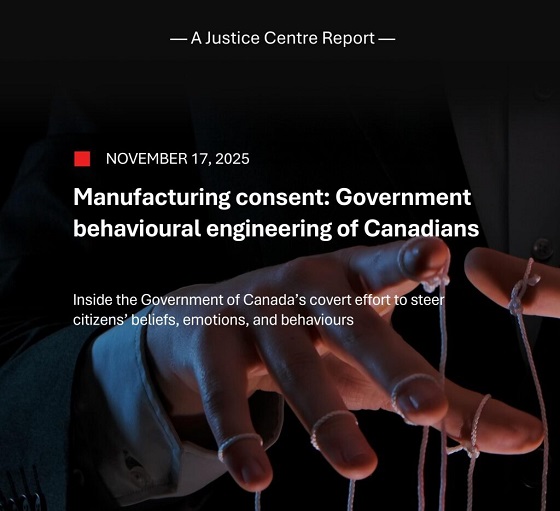Brownstone Institute
Ron DeSantis on Florida’s Covid Response
BY
The crucial turning point in the career of Florida’s Ron DeSantis came with his handling of the coronavirus panic of 2020. Deploying a lighter touch than nearly all states from the beginning, Florida opened up completely, to the screams of horror from major media. He then eschewed mask and vaccine mandates, while keeping schools and beaches open.
His new book The Courage to Be Free: Florida’s Blueprint for America’s Revival explains the backstory to his response and reveals the intense pressures he faced at the time, including the scientific influences that drove his decision-making.
Chapter 10 opens with some quotations from President Eisenhower’s famous warning about the military-industrial complex. “Eisenhower cited the alarming risk that what he termed a “scientific-technological elite”—an elite that is neither interested in nor capable of harmonizing all the competing values and interests that are the hallmark of a free, dynamic society—could commandeer policy and, ultimately, erode our freedoms,” DeSantis writes. “The response to the COVID-19 pandemic vindicated President Eisenhower’s fears, to the detriment of the people of the United States, especially our nation’s children.”
The remainder of the chapter serves as a competent historical survey of the calamity: how it began, how pseudoscience took over, the media complicity, and the strange way common sense and normal liberty were all thrown out the window. As governor, he faced a choice to go along or go his own way. He chose the second path. The narrative in this book is revealing of the stress, the frenzy, and the difficulty of making a hard decision for freedom in the midst of every special interest demanding that you go the other way.
His summary statement of the period:
The elites that drove the response to the COVID-19 pandemic fomented hysteria when they should have promoted calm, produced shoddy modeling and analysis to try to justify destructive policies, asserted certainty when nuance was called for, and allowed political partisanship to trump evidence-based medicine. The cornerstone of the US COVID response—the so-called “15 Days to Slow the Spread” that evolved into boundless Faucist “mitigation”—was ill-conceived, crafted based on inaccurate assumptions, and blind to the harm that heavy-handed public health “interventions” inflict on society.
While doing little, if anything, to slow the course of disease spread, this response in much of our country curtailed freedom, destroyed livelihoods, hurt children, and harmed overall public health. It also exposed the partisanship and rot in public health and the scientific community writ large. In the weeks leading up to President Trump’s announcement of the “15 Days to Slow the Spread” on March 16, 2020, it didn’t seem to me like the US was going to shut down our country. Many of the key players on the then recently formed White House Coronavirus Task Force were urging calm. The pathogen was serious, we were told, but there was no need to panic.
Of course panic was exactly what happened, and this was despite the strange timing of Anthony Fauci’s February 28, 2020, article in the New England Journal of Medicine. He explained that it is most likely that this virus will prove to be about as severe as a bad season of flu. And that article was approved for publication several weeks earlier when he was still counseling calm. By the time it came out, he had already shifted to promoting panicked lockdowns.
The shift in tone was informed in part by epidemiological modeling from Imperial College London. “Drs. Fauci and Birx spearheaded the drive for coercive mitigation policies based largely on epidemiological modeling, not empirical data,” writes DeSantis. “In publicly characterizing the shutdown as a short-term measure, Fauci and Birx were, in reality, setting the country on a course of shutdown until eradication—a goal that was not possible to achieve, but would go on well into 2021, to the detriment of millions upon millions of Americans.” Indeed, “These flawed models drove some truly disastrous policy decisions.”
DeSantis further quotes from Deborah Birx’s own book in which she says that the 15 days bit was always a ruse.
A few days later, the president held a press conference with Fauci and Birx and other members of the task force to announce that he was extending the federal shutdown guidelines for thirty days. Congress had just passed, and the president had just signed, the CARES Act, a massive $2.2 trillion spending bill that appropriated money that could finance a lengthy shutdown by providing stimulus payments to individuals, increasing unemployment benefits, and forgiving loans for small businesses that closed. These two factors really changed the dynamic across the country. The initial call for fifteen days was viewed as a temporary measure but, based on a flawed hospitalizations model, the country was pushed into a lengthy period of mitigation. When asked when it would be appropriate to relax mitigation measures, Fauci broadly and irresponsibly said, “When it goes down to essentially no new cases, no deaths.” What started as a precautionary fifteen-day period of social distancing had transformed into a de facto shutdown until eradication. The consequences of this transformation proved to be devastating to America.
At this point in the narrative, the governor backs up in time to discuss what an unprecedented policy response this truly was. It was never recommended, much less deployed in the past. He tells how he revisited pandemic plans from the past and found the 2006 treatise by Donald A. Henderson, which concluded that coercive mitigation strategies would turn “a manageable epidemic” into “catastrophe.”
What is crucial about this section is just how deeply the governor was reading in the real science at the time. He figured out, for example, that it was crucial to discover just how prevalent this virus really was in the population. Here he relied on Jay Bhattacharya’s April 2020 study of seroprevalence in Santa Clara, California.
He further noted Jay’s public stance against lockdowns. Here was when the governor stopped trusting anything coming from Washington and started leaning even on Florida’s county governments to open everything up. The media howled in horror and dubbed him DeathSantis. The same happened on the mask and vaccine mandates, which the governor effectively outlawed in the state, based not only on his desire to protect the people’s freedoms but also the actual science appearing in the journals.
Particularly fascinating here is the author’s discussion of how he came to realize the seasonality of the virus, a point that was nearly completely lost on major media and the CDC. His realization came from the work of Stanford professor Michael Levitt in his empirical discoveries concerning the trajectory of the disease. This confirmed for him that his number one job was to focus on the vulnerable while protecting the freedoms of everyone else.
Here we have a fascinating narrative of a governor who initially was willing to follow federal guidance until he, nearly on his own, came to discover that it was actually full of holes. At this point, he had to go his own way. We can look back and observe that this took him too long and he surely agrees. What’s notable was his willingness to look at data and facts and apply them in light of his responsibilities as governor.
At the very start of the pandemic, I did not appreciate how the so-called public health experts were such a stridently partisan, highly ideological mess. This became clear a couple of months later when the same public health experts who had been sharply critical of Americans for leaving their homes because of COVID-19 suddenly endorsed the mass protests following the death of George Floyd in Minneapolis…. For two months, these so-called experts lambasted anyone for making a cost-benefit analysis when it came to COVID-19 mitigation policies. Then, the moment it suited their political interests, they reversed course by endorsing the protests as passing their cost-benefit analysis over COVID-19 lockdowns. That they specifically rejected protesting for other causes they did not support told me all I needed to know about what partisans these people were.
At this point, he was done and even suspended the bit of guidance he had previously implemented from the CDC.
After several weeks of consuming data and measuring it against policies implemented around the country, I decided that I would not blindly follow Fauci and other elite experts. To this end, I revoked my order suspending elective procedures at hospitals. The predicted April surge in coronavirus patients never materialized, leaving Florida with one of the lowest patient censuses on record. I also abandoned the federal government’s framework of essential versus nonessential businesses. Every job and every business are essential for the people who need employment or who own the business. It is wrong to characterize any job or business as nonessential, and this entire framework needs to be discarded in pandemic preparedness literature.
As for the idea of vaccine passports, which were embraced by New York and many local governments, DeSantis is very tough in this book, explaining his decision to make them completely illegal in his state.
My view was simple: no Floridian should have to choose between a job that they need and a shot they don’t want. It was especially galling to me that Biden and his ilk were prepared to see policemen, firefighters, and nurses lose their jobs over the shots. These are people who were working on the front lines throughout the entire pandemic—many of them had already had COVID—and now Biden wanted to cast them aside because they wouldn’t bend the knee.
The entire chapter is worth a read, particularly his discussion of the Great Barrington Declaration and the difficulties he faced at each stage in fighting off both federal bureaucrats and media hounds. It’s truly difficult to appreciate the full extent of the pressures at the time but the author does a great job recreating the setting at the time. These days, more people know that he was right, especially given the excellent health, educational, and economic data in Florida, and how it stands in sharp contrast to lockdowns states.
A major decision he took was to appoint the brilliant Joseph Ladapo as his surgeon general. It was not just his scientific excellence that attracted the governor. It was also Ladapo’s willingness and ability to stand up to the intense pressure:
Joe Ladapo is a good example of what it takes to succeed in an administration that bucks elite narratives. Key personnel need to view media smears as a form of positive feedback—the operatives for corporate outlets would not bother attacking someone unless that person is effective and is over the target. Not everyone is cut out to take the arrows, but being able to do so is essential to effectively navigating the political battlefield.
The governor concludes:
We can never let this happen in our country again. Congress must conduct a thorough and unbiased investigation of all aspects of the pandemic—the origins of the virus, the conduct of bureaucrats like Dr. Fauci, the damage done by locking kids out of school, the harm caused by shutting down the economy, the failures of so-called public health experts, the role played by pharmaceutical companies, and the actions of the Chinese Communist Party. For once, Congress must put out the unvarnished truth. President Eisenhower was right about the perils of turning policy over to a scientific-technological elite. As the iron curtain of Faucism descended across our continent, the State of Florida stood resolutely in the way. We helped to preserve freedom and to pull the country back from the abyss. Without Florida’s leadership and courage, I fear that Dr. Fauci and his lockdowners would have won. Our country never would have been the same.
Most political biographies are canned, conventional, and obviously manipulative (example A and B). This one is not. It is honest, frank, exciting, accurate, and an overall excellent read, especially on the topics that truly matter to the future.
Brownstone Institute
Bizarre Decisions about Nicotine Pouches Lead to the Wrong Products on Shelves

From the Brownstone Institute
A walk through a dozen convenience stores in Montgomery County, Pennsylvania, says a lot about how US nicotine policy actually works. Only about one in eight nicotine-pouch products for sale is legal. The rest are unauthorized—but they’re not all the same. Some are brightly branded, with uncertain ingredients, not approved by any Western regulator, and clearly aimed at impulse buyers. Others—like Sweden’s NOAT—are the opposite: muted, well-made, adult-oriented, and already approved for sale in Europe.
Yet in the United States, NOAT has been told to stop selling. In September 2025, the Food and Drug Administration (FDA) issued the company a warning letter for offering nicotine pouches without marketing authorization. That might make sense if the products were dangerous, but they appear to be among the safest on the market: mild flavors, low nicotine levels, and recyclable paper packaging. In Europe, regulators consider them acceptable. In America, they’re banned. The decision looks, at best, strange—and possibly arbitrary.
What the Market Shows
My October 2025 audit was straightforward. I visited twelve stores and recorded every distinct pouch product visible for sale at the counter. If the item matched one of the twenty ZYN products that the FDA authorized in January, it was counted as legal. Everything else was counted as illegal.
Two of the stores told me they had recently received FDA letters and had already removed most illegal stock. The other ten stores were still dominated by unauthorized products—more than 93 percent of what was on display. Across all twelve locations, about 12 percent of products were legal ZYN, and about 88 percent were not.
The illegal share wasn’t uniform. Many of the unauthorized products were clearly high-nicotine imports with flashy names like Loop, Velo, and Zimo. These products may be fine, but some are probably high in contaminants, and a few often with very high nicotine levels. Others were subdued, plainly meant for adult users. NOAT was a good example of that second group: simple packaging, oat-based filler, restrained flavoring, and branding that makes no effort to look “cool.” It’s the kind of product any regulator serious about harm reduction would welcome.
Enforcement Works
To the FDA’s credit, enforcement does make a difference. The two stores that received official letters quickly pulled their illegal stock. That mirrors the agency’s broader efforts this year: new import alerts to detain unauthorized tobacco products at the border (see also Import Alert 98-06), and hundreds of warning letters to retailers, importers, and distributors.
But effective enforcement can’t solve a supply problem. The list of legal nicotine-pouch products is still extremely short—only a narrow range of ZYN items. Adults who want more variety, or stores that want to meet that demand, inevitably turn to gray-market suppliers. The more limited the legal catalog, the more the illegal market thrives.
Why the NOAT Decision Appears Bizarre
The FDA’s own actions make the situation hard to explain. In January 2025, it authorized twenty ZYN products after finding that they contained far fewer harmful chemicals than cigarettes and could help adult smokers switch. That was progress. But nine months later, the FDA has approved nothing else—while sending a warning letter to NOAT, arguably the least youth-oriented pouch line in the world.
The outcome is bad for legal sellers and public health. ZYN is legal; a handful of clearly risky, high-nicotine imports continue to circulate; and a mild, adult-market brand that meets European safety and labeling rules is banned. Officially, NOAT’s problem is procedural—it lacks a marketing order. But in practical terms, the FDA is punishing the very design choices it claims to value: simplicity, low appeal to minors, and clean ingredients.
This approach also ignores the differences in actual risk. Studies consistently show that nicotine pouches have far fewer toxins than cigarettes and far less variability than many vapes. The biggest pouch concerns are uneven nicotine levels and occasional traces of tobacco-specific nitrosamines, depending on manufacturing quality. The serious contamination issues—heavy metals and inconsistent dosage—belong mostly to disposable vapes, particularly the flood of unregulated imports from China. Treating all “unauthorized” products as equally bad blurs those distinctions and undermines proportional enforcement.
A Better Balance: Enforce Upstream, Widen the Legal Path
My small Montgomery County survey suggests a simple formula for improvement.
First, keep enforcement targeted and focused on suppliers, not just clerks. Warning letters clearly change behavior at the store level, but the biggest impact will come from auditing distributors and importers, and stopping bad shipments before they reach retail shelves.
Second, make compliance easy. A single-page list of authorized nicotine-pouch products—currently the twenty approved ZYN items—should be posted in every store and attached to distributor invoices. Point-of-sale systems can block barcodes for anything not on the list, and retailers could affirm, once a year, that they stock only approved items.
Third, widen the legal lane. The FDA launched a pilot program in September 2025 to speed review of new pouch applications. That program should spell out exactly what evidence is needed—chemical data, toxicology, nicotine release rates, and behavioral studies—and make timely decisions. If products like NOAT meet those standards, they should be authorized quickly. Legal competition among adult-oriented brands will crowd out the sketchy imports far faster than enforcement alone.
The Bottom Line
Enforcement matters, and the data show it works—where it happens. But the legal market is too narrow to protect consumers or encourage innovation. The current regime leaves a few ZYN products as lonely legal islands in a sea of gray-market pouches that range from sensible to reckless.
The FDA’s treatment of NOAT stands out as a case study in inconsistency: a quiet, adult-focused brand approved in Europe yet effectively banned in the US, while flashier and riskier options continue to slip through. That’s not a public-health victory; it’s a missed opportunity.
If the goal is to help adult smokers move to lower-risk products while keeping youth use low, the path forward is clear: enforce smartly, make compliance easy, and give good products a fair shot. Right now, we’re doing the first part well—but failing at the second and third. It’s time to fix that.
Addictions
The War on Commonsense Nicotine Regulation

From the Brownstone Institute
Cigarettes kill nearly half a million Americans each year. Everyone knows it, including the Food and Drug Administration. Yet while the most lethal nicotine product remains on sale in every gas station, the FDA continues to block or delay far safer alternatives.
Nicotine pouches—small, smokeless packets tucked under the lip—deliver nicotine without burning tobacco. They eliminate the tar, carbon monoxide, and carcinogens that make cigarettes so deadly. The logic of harm reduction couldn’t be clearer: if smokers can get nicotine without smoke, millions of lives could be saved.
Sweden has already proven the point. Through widespread use of snus and nicotine pouches, the country has cut daily smoking to about 5 percent, the lowest rate in Europe. Lung-cancer deaths are less than half the continental average. This “Swedish Experience” shows that when adults are given safer options, they switch voluntarily—no prohibition required.
In the United States, however, the FDA’s tobacco division has turned this logic on its head. Since Congress gave it sweeping authority in 2009, the agency has demanded that every new product undergo a Premarket Tobacco Product Application, or PMTA, proving it is “appropriate for the protection of public health.” That sounds reasonable until you see how the process works.
Manufacturers must spend millions on speculative modeling about how their products might affect every segment of society—smokers, nonsmokers, youth, and future generations—before they can even reach the market. Unsurprisingly, almost all PMTAs have been denied or shelved. Reduced-risk products sit in limbo while Marlboros and Newports remain untouched.
Only this January did the agency relent slightly, authorizing 20 ZYN nicotine-pouch products made by Swedish Match, now owned by Philip Morris. The FDA admitted the obvious: “The data show that these specific products are appropriate for the protection of public health.” The toxic-chemical levels were far lower than in cigarettes, and adult smokers were more likely to switch than teens were to start.
The decision should have been a turning point. Instead, it exposed the double standard. Other pouch makers—especially smaller firms from Sweden and the US, such as NOAT—remain locked out of the legal market even when their products meet the same technical standards.
The FDA’s inaction has created a black market dominated by unregulated imports, many from China. According to my own research, roughly 85 percent of pouches now sold in convenience stores are technically illegal.
The agency claims that this heavy-handed approach protects kids. But youth pouch use in the US remains very low—about 1.5 percent of high-school students according to the latest National Youth Tobacco Survey—while nearly 30 million American adults still smoke. Denying safer products to millions of addicted adults because a tiny fraction of teens might experiment is the opposite of public-health logic.
There’s a better path. The FDA should base its decisions on science, not fear. If a product dramatically reduces exposure to harmful chemicals, meets strict packaging and marketing standards, and enforces Tobacco 21 age verification, it should be allowed on the market. Population-level effects can be monitored afterward through real-world data on switching and youth use. That’s how drug and vaccine regulation already works.
Sweden’s evidence shows the results of a pragmatic approach: a near-smoke-free society achieved through consumer choice, not coercion. The FDA’s own approval of ZYN proves that such products can meet its legal standard for protecting public health. The next step is consistency—apply the same rules to everyone.
Combustion, not nicotine, is the killer. Until the FDA acts on that simple truth, it will keep protecting the cigarette industry it was supposed to regulate.
-

 Alberta9 hours ago
Alberta9 hours agoNational Crisis Approaching Due To The Carney Government’s Centrally Planned Green Economy
-

 COVID-1922 hours ago
COVID-1922 hours agoNew report warns Ottawa’s ‘nudge’ unit erodes democracy and public trust
-

 Agriculture10 hours ago
Agriculture10 hours agoFederal cabinet calls for Canadian bank used primarily by white farmers to be more diverse
-

 Great Reset8 hours ago
Great Reset8 hours agoCanadian government forcing doctors to promote euthanasia to patients: report
-

 Crime2 days ago
Crime2 days agoHow Global Organized Crime Took Root In Canada
-

 Energy2 days ago
Energy2 days agoExpanding Canadian energy production could help lower global emissions
-

 Business2 days ago
Business2 days agoThe numbers Canada uses to set policy don’t add up
-

 COVID-191 day ago
COVID-191 day agoFreedom Convoy protestor Evan Blackman convicted at retrial even after original trial judge deemed him a “peacemaker”









